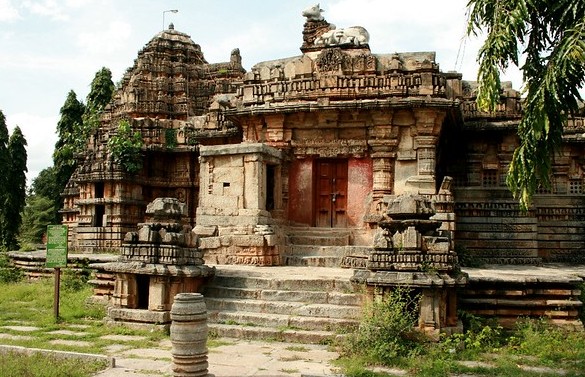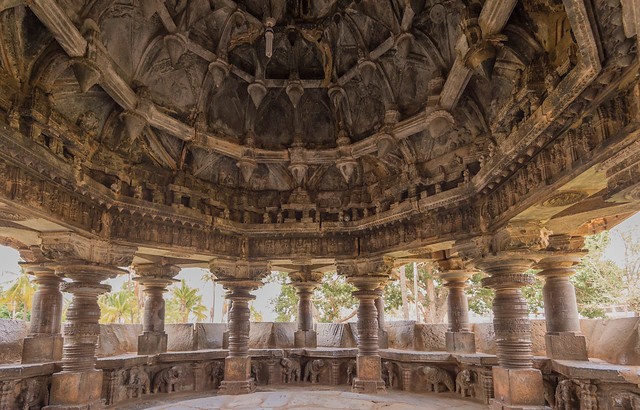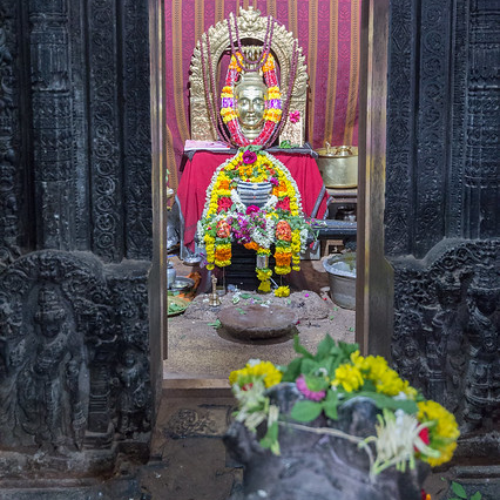Stone Stories of the Hoysala Era
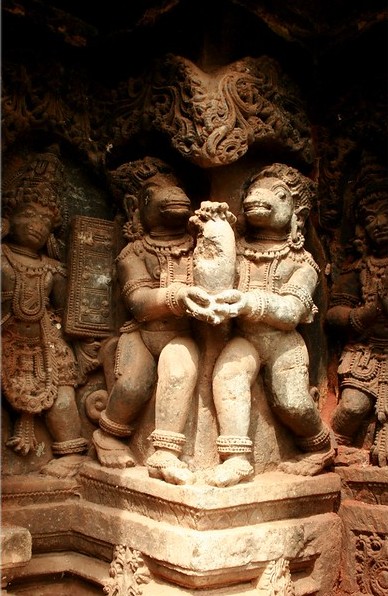
The Chandramouleswara Temple is one of the finest examples of Hoysala architecture, known for its attention to detail, geometric precision, and artistic storytelling through stone.
⭐ Unique Star-Shaped Plan
The temple is built on a stellate (star-shaped) platform, which is a signature style of Hoysala temples. This star design creates a stunning visual impact and adds complexity to the temple’s outer walls, allowing for more sculptural space.
🪨 Soapstone Craftsmanship
The entire structure is made of chloritic schist, commonly known as soapstone. This material was chosen for its softness when freshly quarried, which made it easier for sculptors to carve intricate designs. Over time, soapstone hardens with exposure, preserving the details for centuries.
🎨 Intricate Carvings and Panels
The temple walls are filled with elaborate carvings:
-
Deities from Hindu mythology such as Shiva, Vishnu, Parvati, Lakshmi, and Ganesha.
-
Scenes from epics like the Ramayana, Mahabharata, and Bhagavata Purana.
-
Dancers, musicians, floral motifs, animals, and mythical creatures are sculpted with lifelike elegance.
Every carving is symmetrically aligned, and no two panels are exactly the same—each tells its own story.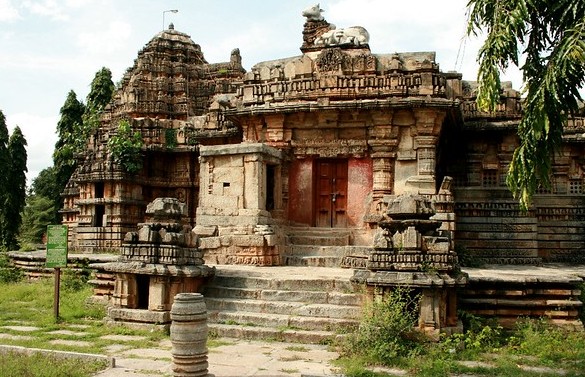
🧱 Pillared Mantapa (Hall)
The temple features a stunning open mantapa (pillared hall) supported by lathe-turned, polished stone columns. These pillars are geometrically precise and often topped with floral designs or miniature deities. Some pillars even rotate slightly due to their perfect balance.
🕉️ Shiva Linga Sanctum
The sanctum (garbhagriha) houses the Shiva Linga, symbolizing Lord Chandramouleswara. The sanctum is relatively simple, creating a contrast with the richly decorated exterior, perhaps to focus the devotee’s attention on the divine.
🛠️ Tools and Techniques
Hoysala sculptors, known as "Vishwakarma sthapathis", used chisels, hammer-stones, bow drills, and measuring strings. They planned everything meticulously:
-
Symmetry was maintained using string layouts.
-
Sculpture themes followed Shilpa Shastra, the traditional Indian treatise on art and architecture.
-
They started from the bottom and carved upward, ensuring stable support and detail refinement.
🌟 Symbolism and Spiritual Geometry
Every element in the temple has spiritual meaning:
-
The star-shaped base symbolizes the cosmos.
-
The vertical alignment from the ground to the temple top represents the path to moksha (liberation).
-
The mandalas and symmetrical patterns reflect the divine order and harmony of the universe.


